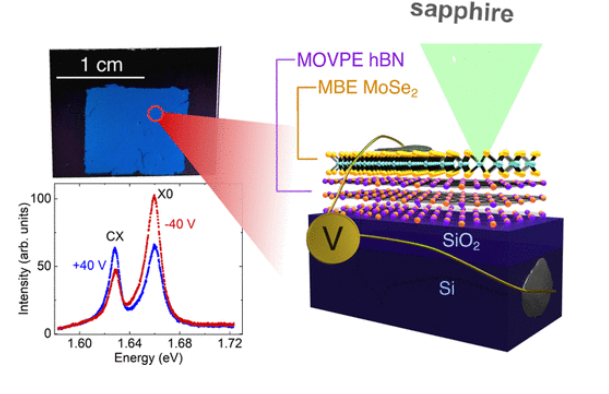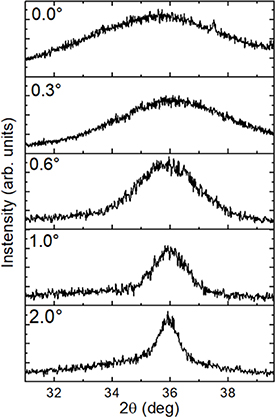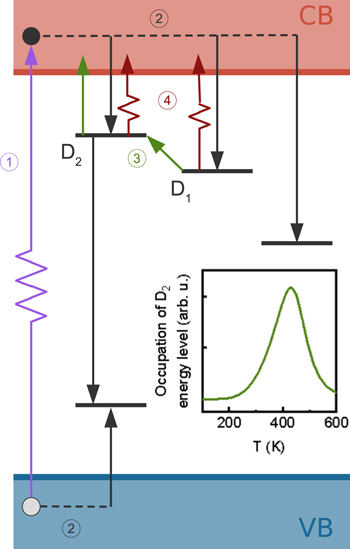Our team made it to the Boron Nitride Workshop 2025 in Nashville!
Dr hab. Johannes Binder delivered a talk titled “A Question of Polytype Control and Quality: From Heteroepitaxy to Homoepitaxy of Boron Nitride.”. PhD students, Jakub Iwański and Piotr Tatarczak, presented posters on piezoelectric domains and tuning properties for quantum emission applications through growth conditions in our material.

2024 was a highly productive year for the LMLs! Our members successfully published 8 papers and secured a patent for All-BN distributed Bragg reflectors fabricated in a single MOCVD process
We invite you to visit our Publications section to learn:
-> What types of defects can you expect in BN layers grown by MOVPE?
-> How to distinguish between boron nitride polytypes in your samples during defect luminescence studies?
-> Whether it’s possible to build a heterostructure with tunable carrier concentration?

What are the environmental applications of epitaxial hexagonal boron nitride? Lately, we observed that hBN bubbles are formed upon electron beam irradiation. Such a structure can effectively store molecular hydrogen for weeks and is resistant to even extreme mechanical deformation. Hydrogen generation is triggered by the radiolysis of interfacial water. We believe that hBN can be applied in innovative hydrogen generation and storage schemes and help in the development of future green energy systems. For more details, take a look at our recent work: Epitaxial Hexagonal Boron Nitride for Hydrogen Generation by Radiolysis of Interfacial Water that was published in Nano Letters (https://pubs.acs.org/doi/full/10.1021/acs.nanolett.2c04434)

Our team is often wondering: how the substrate affect the final growth of two-dimensional layers of hexagonal boron nitride (h-BN)? In our latest work, we discuss the importance of the sapphire substrate off-cut angle on the epitaxially grown material. We found out that the off-cut angle of 1° clearly yields the highest quality of h-BN layers. For more details check out our article: Effective substrate for the growth of multilayer h-BN on sapphire – substrate off-cut, pre-growth, and post-growth conditions in metal-organic vapor phase epitaxy recently published in 2D materials https://iopscience.iop.org/article/10.1088/2053-1583/acb44a/meta

During our efforts to produce high quality epitaxial hexagonal boron nitride, we encounter many questions about its characteristics. In our last work, we try to answer the question of how hBN layers interact with their substrate and how their properties are influenced by defects. To do so, we investigated our material with Fourier-transform infrared spectroscopy (FTIR) in the temperature range of 160–540 K. Surprisingly, we observed a giant increase in the E1u phonon energy in a narrow temperature range and explain it in terms of strain generation resulting from charge redistribution between shallow traps and different defects. Our results were published in Nanotechnology journal: Temperature induced giant shift of phonon energy in epitaxial boron nitride layers

In September we took part in two graphene related conferences. We presented our newest results at Graphene Week 2022 (5-9.09.22, Munich, Germany) and 7th Polish Conference “Graphene and other 2D materials” (12-14.09.22, Łódź, Poland). Our PhD student Katarzyna Ludwiczak was distincted by jury in a best oral presentation competition. Congratulations!

We are pleased to announce that our team will present the results of research conducted in our group at the “Jaszowiec 2021” conference. We will present both the results of growth and technological processes with the use of hexagonal boron nitride. We will also present other results from the field of 2D materials.

Our team has developed a method for the precise etching of germanium in the process of photocorrosion and production of graphene membranes on a micro scale. The developed technology has been the subject of patent application and has been published in the renowned 2D materials journal: Suspended graphene on germanium: selective local etching via laser-induced photocorrosion of germanium.
